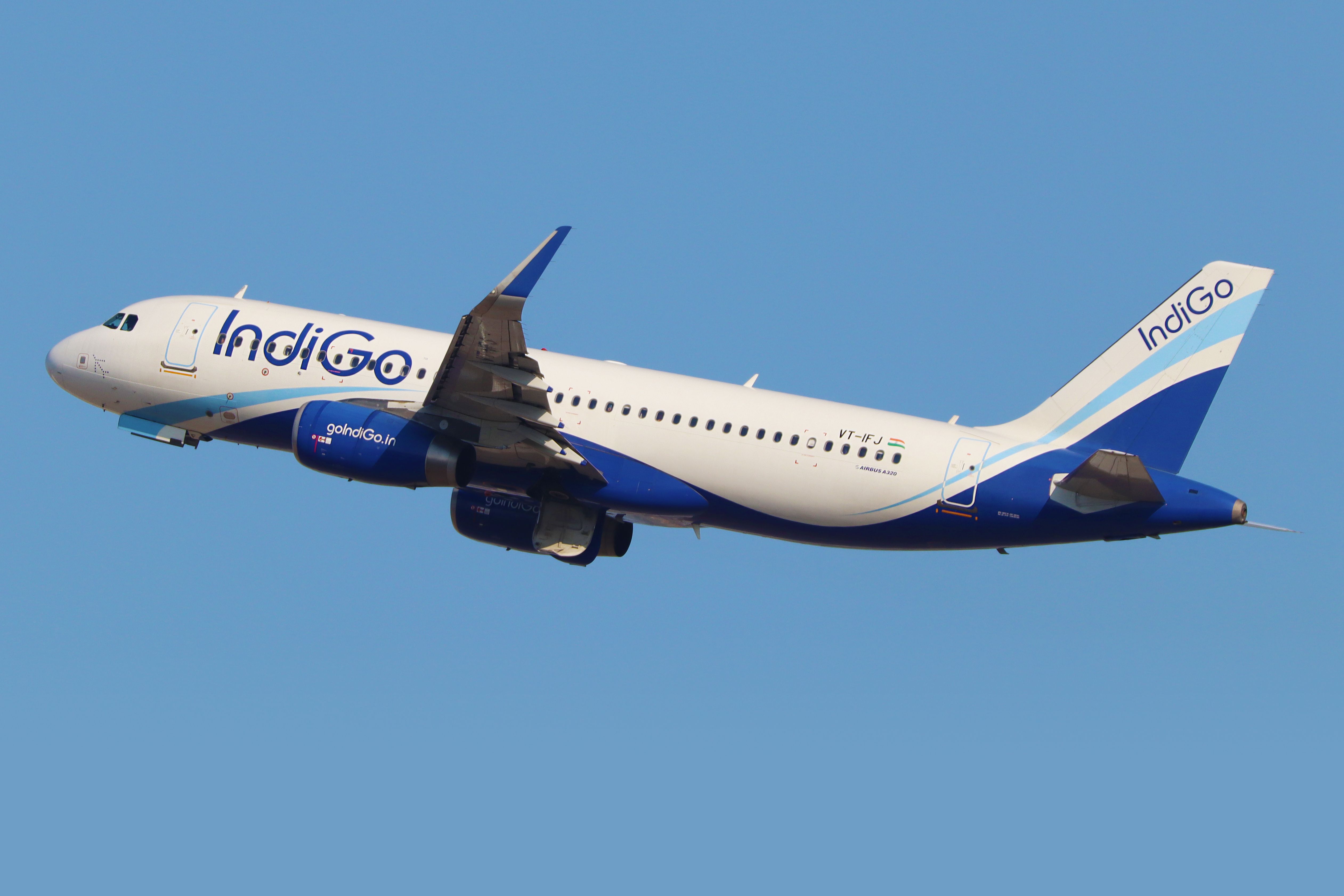Double Engine Shutdown: IndiGo Flights Grounded Following Emergency Landings, This is Why Indigo Is India’s Most Unsafe Airline

Double Engine Shutdown: IndiGo Flights Grounded Following Emergency Landings
In a harrowing turn of events, two IndiGo flights found themselves battling engine shutdowns mid-air, prompting emergency landings that sent shockwaves through the aviation industry. This unsettling incident unfolded on Tuesday, casting a spotlight on passenger safety and raising concerns about the maintenance and operation of commercial aircraft.
The first of these nerve-wracking events occurred aboard a Madurai-Mumbai flight, while the second unfolded on a Kolkata-Bengaluru route, both operated by the renowned Indian airline, IndiGo. The flights, carrying a collective total of hundreds of passengers, were thrown into disarray as the engines suddenly ceased to function as expected.
Amid the chaos, the flight from Madurai to Mumbai managed to land at its originally scheduled destination, albeit under the looming shadow of the engine mishap. However, the Kolkata-Bengaluru flight was not as fortunate. With its engine faltering, the pilot was left with no choice but to make an immediate U-turn, retracing the path back to Kolkata. The passengers on board this flight were undoubtedly left rattled by the unexpected turn of events, with their journey taking an unforeseen and anxiety-inducing detour.
The Directorate General of Civil Aviation (DGCA), the regulatory body overseeing civil aviation operations in India, swiftly stepped into action. Recognizing the gravity of the situation, the DGCA announced that it would undertake a comprehensive “technical evaluation” of both incidents. This evaluation aims to delve deep into the root causes of the engine shutdowns, leaving no stone unturned in the quest for answers that could potentially prevent such incidents in the future.

Passenger safety has always been a paramount concern within the aviation industry. With this incident, the alarm bells have once again started ringing, prompting authorities to address the pressing need for stringent safety measures and meticulous maintenance practices. The passengers who board flights entrust their lives to the airline companies and the aviation industry at large, making it imperative that every conceivable effort is made to ensure their safety.
IndiGo, known for its widespread operations and extensive fleet, has faced its share of challenges in the past. This incident, however, casts a particularly glaring spotlight on the airline’s operational integrity and maintenance protocols. While aviation technology has made significant strides, providing passengers with unparalleled convenience and speed, incidents like these serve as stark reminders of the underlying risks that come hand in hand with air travel.
Engine shutdowns are a rare but highly concerning occurrence. The propulsion system of an aircraft is its beating heart, the very essence that keeps it soaring through the skies. An engine shutdown mid-air is akin to a sudden cardiac arrest – the consequences can be dire if not addressed promptly and effectively. The pilots, who are trained rigorously to handle emergencies, play a pivotal role in such situations. Their ability to maintain composure under duress and execute well-rehearsed protocols can mean the difference between a safe landing and catastrophe.

As aviation experts delve into the technical aspects of these engine shutdowns, speculations abound. Possible factors contributing to such incidents include manufacturing defects, inadequate maintenance, and even human error. The complex interplay of these factors underscores the multi-faceted nature of aviation safety. It is a delicate equilibrium that demands not only state-of-the-art engineering but also a culture of unwavering diligence in maintenance and operations.
The aviation community is no stranger to adversity. Throughout history, the industry has weathered countless storms, emerging stronger and more resilient each time. The engine shutdown incidents serve as yet another challenge, prompting a reevaluation of safety protocols and risk management strategies. The DGCA’s role in this process is pivotal – its impartial evaluation can shed light on any potential regulatory gaps, leading to reforms that could elevate the entire industry’s safety standards.
Passengers, too, have a role to play. While they place their trust in the airline, being informed about safety procedures and understanding their rights in such situations is crucial. Flight disruptions are unnerving, but knowing that authorities are diligently investigating the causes can offer a modicum of reassurance. This incident underscores the importance of maintaining open channels of communication between airlines and passengers, fostering transparency and trust.
The engine shutdowns also spotlight the role of technology in aviation safety. Modern aircraft are equipped with an array of sensors and monitoring systems that provide real-time data to both pilots and ground control. These systems act as vigilant sentinels, flagging any anomalies in the aircraft’s performance. However, their effectiveness hinges on meticulous calibration, regular maintenance, and responsive action in the face of warnings.
In the wake of this incident, the term “technical evaluation” takes on a weighty significance. It is a process that demands meticulousness, precision, and impartiality. The aviation experts involved in this evaluation shoulder a tremendous responsibility – not only to the passengers directly impacted by the engine shutdowns but to the entire industry that relies on their insights to prevent future occurrences.

In conclusion, the engine shutdowns experienced by two IndiGo flights have sent shockwaves through the aviation community and raised important questions about safety and operational protocols. The incidents serve as a stark reminder of the delicate balance that exists in aviation – a balance between cutting-edge technology, rigorous maintenance, and the unpredictable nature of the skies. As the DGCA undertakes its technical evaluation, the world watches with bated breath, hopeful that the findings will pave the way for enhanced safety measures and a renewed commitment to passenger well-being.




